The mounting system is the base of the solar system. Rooftop solar panels must be attached to a metal racking system, which is secured to the roof. Without a well-designed base, the performance and return on investment (ROI) of the overall system is at risk.
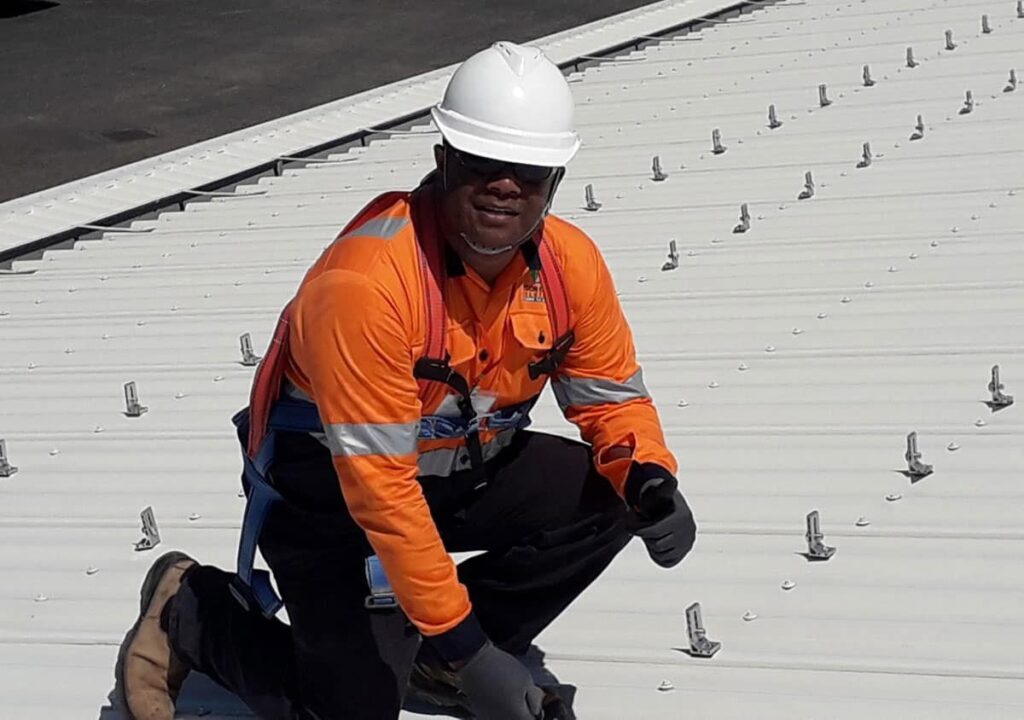
Mounting System Basics
The racking system on which the panels are mounted can vary greatly. There are numerous design types and attachments mechanisms. Usually made from stainless steel or aluminum, mounting systems come in a variety of designs including tilt frame, flat roof-mounted or flush attachment on sloped roofs. Mounting rails can be ballasted with weights on top of the roof, attached to the roof with clamps or bolted into place through leak-proof roof penetrations.
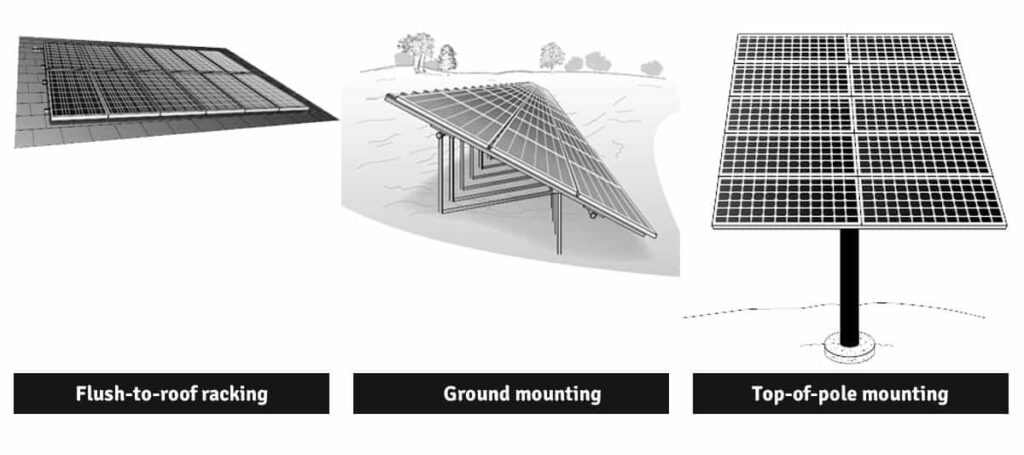
Solar panel mounting categories
The roof’s age, slope, and roofing materials will dictate which design options and attachment mechanisms are possible. Also, building and shading obstructions such as HVAC vents, mechanicals, trees, and nearby buildings limit the roof area that can be utilized for the solar installation and thus the mounting system needs to be designed around these obstructions.
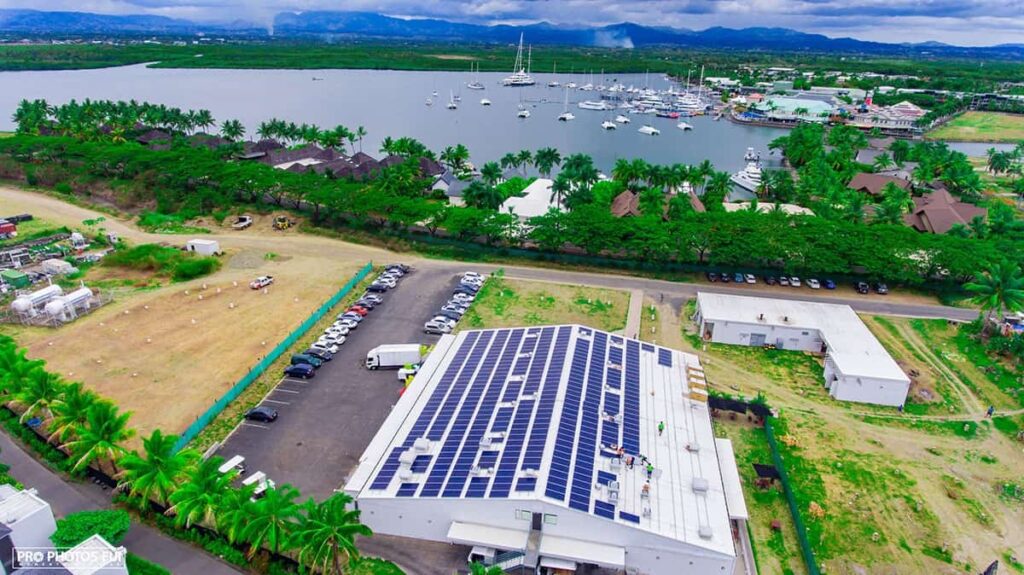
Leaving spaces for shade obstructions. Image – Hilton Fiji Resort & Spa, Denarau Island, Fiji.
Unique roof conditions must be analyzed to determine the best design style, among the diverse options. Roof material is the first determining factor. Different racking systems are needed for flat EPDM rubber, stone or asphalt roofs versus sloped metal roofs or wood roofs covered in shingles or clay tiles.
A good mounting system should be easy to install, made from a quality, rust-free materials – or materials with sufficient corrosion protection (such as galvanized steel) – and should effectively protect a system’s cables. In addition, it must be designed to withstand your region’s harshest weather conditions.
Storm Resistant Designs
Ensuring power generation continues during, or immediately following a major weather threat is mission-critical for many essential businesses. Constructing a storm-hardy power generation structure depends on the mounting design.
The right solar mounting system, if installed correctly, will provide the structural support a solar system needs, in order to protect it from wind and other damaging weather conditions. For example, the distance between the panels and the tilt angle of the panels can make a big difference with regard to wind tolerance levels and overall structural strength.
Insurance companies may request technical specification documentation upon the commissioning of a new solar system. Although no building or structure can be guaranteed 100% stormproof, obtaining engineering certifications stating the tolerances is a good idea. For example, in tropical areas receiving documentation stating your investment was designed to withstand a Cat 5 cyclone will provide some peace of mind.
Designing for Maximum Energy Performance
The directional facing, tilt angle and elevation of a solar system can dramatically impact the amount of energy generated. Therefore designing the mounting system to maximize energy performance is a key determinant of ROI, over the system’s 20+ year lifetime.
Again, the style of roof, amount of available space, the overall size of the installation and shading considerations need to be taken into consideration. Traditional high profile south-facing systems have long been the norm. Now east/west low profile systems or even flat non-directional panel installations are becoming more common. Additionally, mounting systems can sit on separate sub-frames or tilt legs to provide the ideal inclination for a given location and roof circumstances.
Conclusion
Balancing design considerations, optimal energy production levels, ROI and structural integrity requires expert calculations and industry knowledge. Therefore it is necessary to have a skilled and experienced solar developer perform a thorough site inspection to determine your rooftop solar panel mounting options and optimal design.
Vision Energy Solutions (VES) has the expertise needed to assess your unique project circumstances and provide recommendations. Contact our team to discuss a cyclone-resistant solar power system for your home or business.
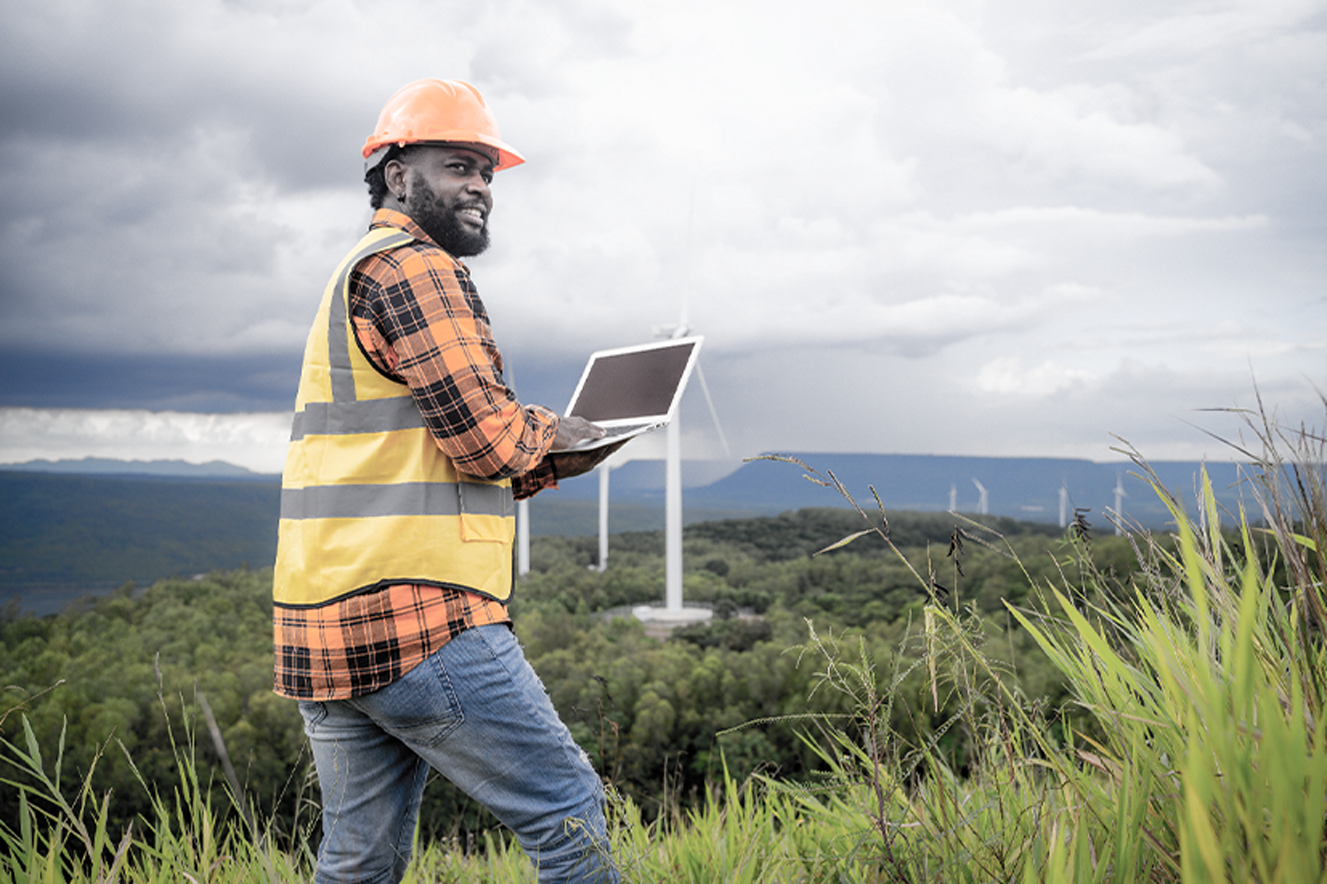
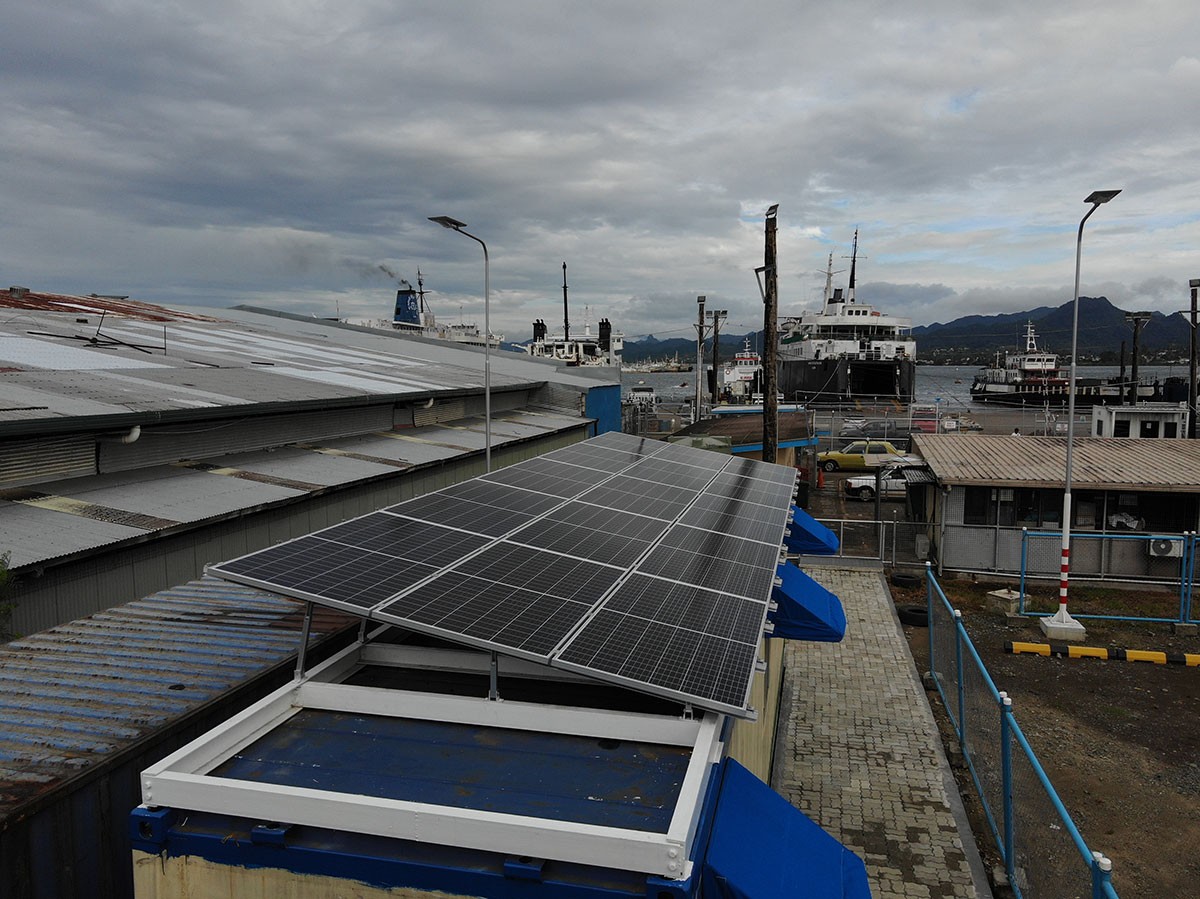

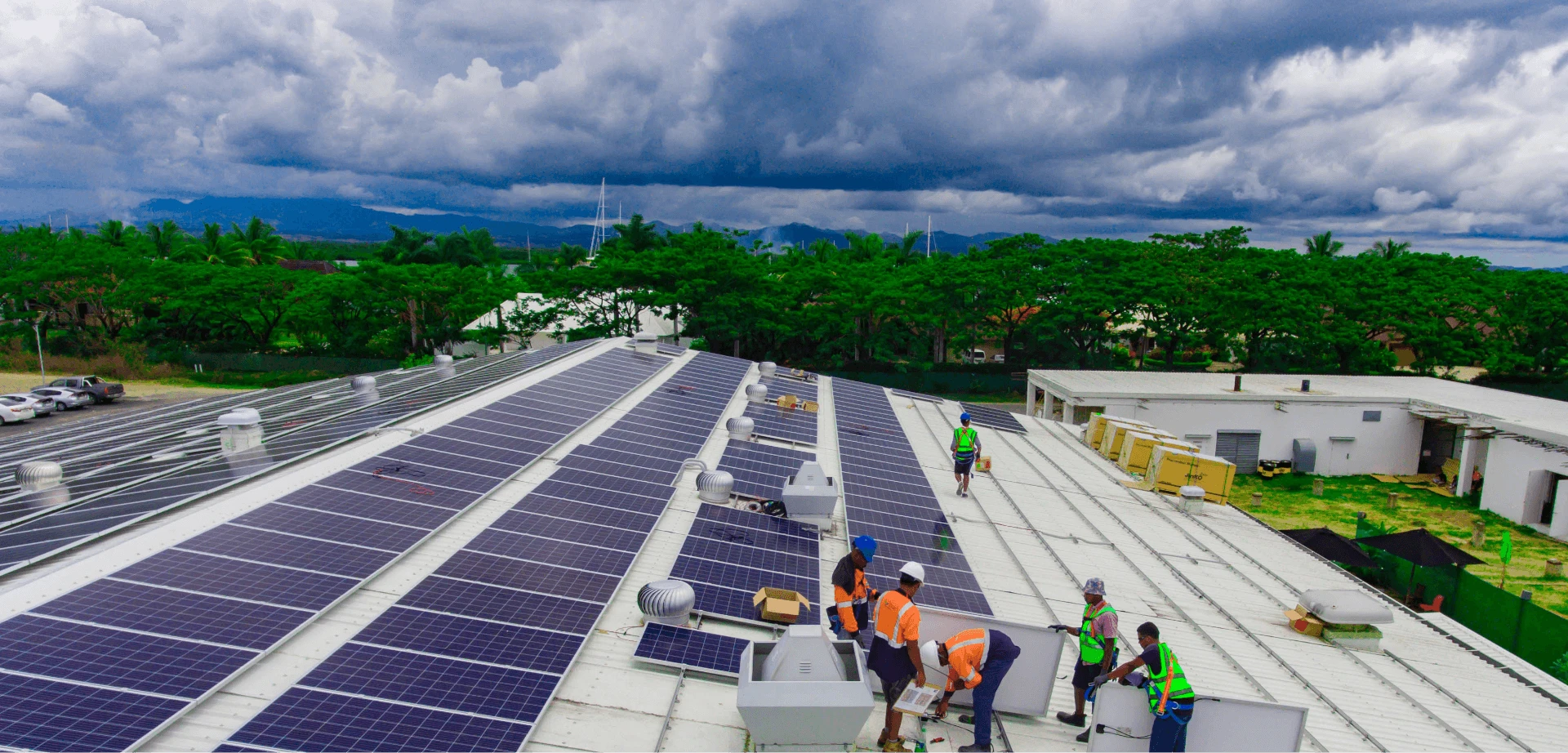
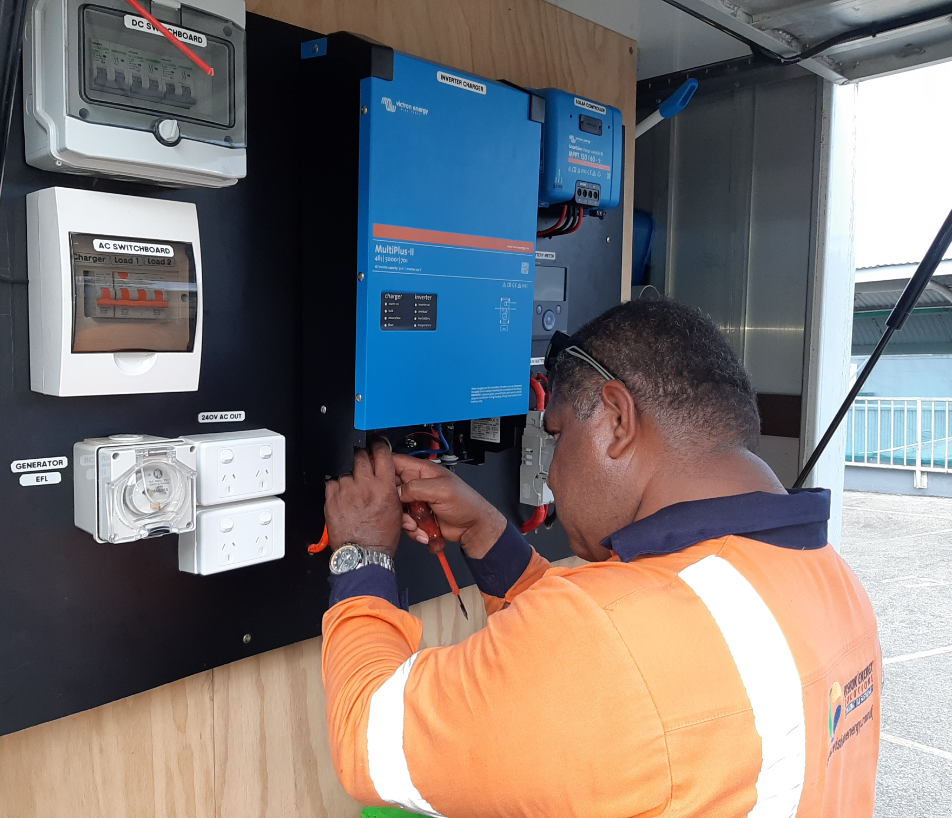
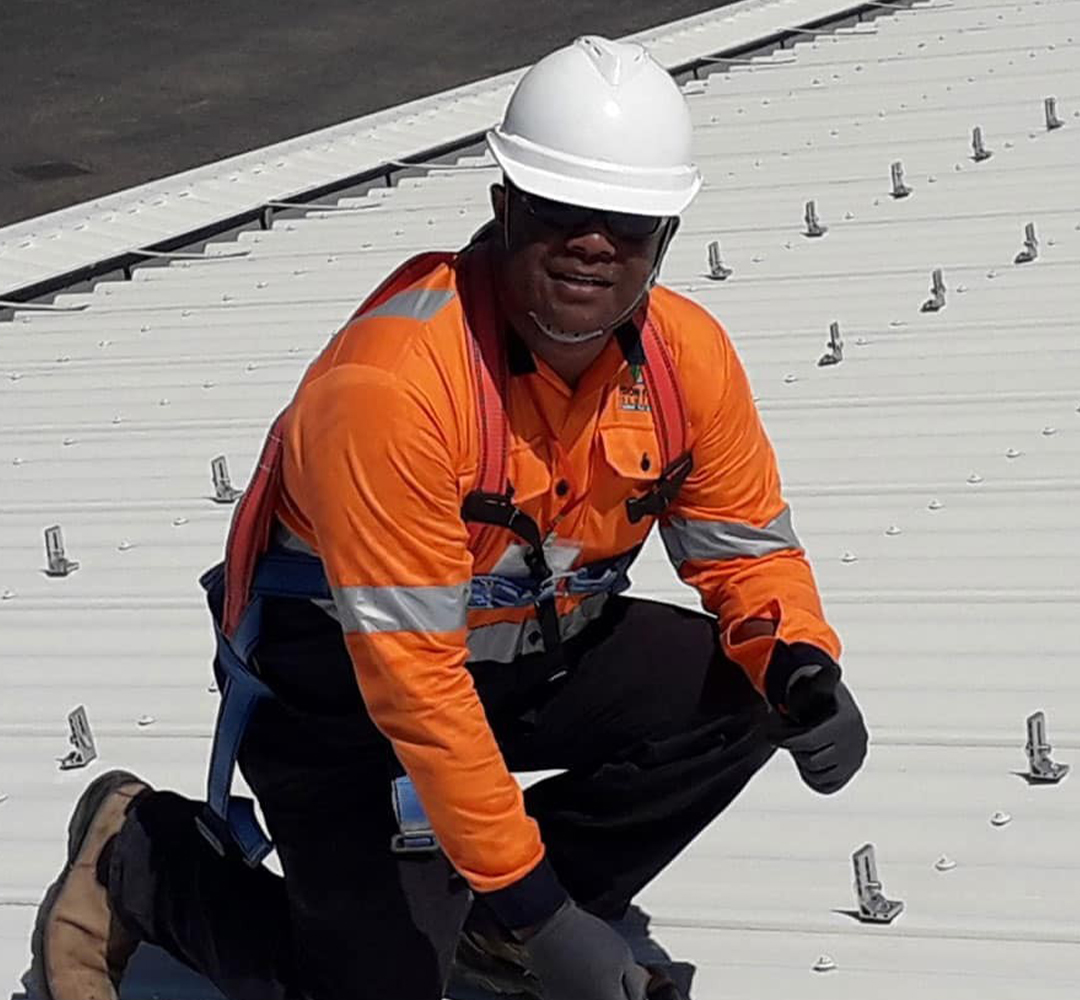
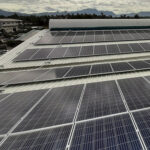
certainly like your website but you need to take a look at the spelling on quite a few of your posts Many of them are rife with spelling problems and I find it very troublesome to inform the reality nevertheless I will definitely come back again
Hi! I know this is kind of off topic but I was wondering which blog platform are you using for this site?
I’m getting tired of WordPress because I’ve had issues with
hackers and I’m looking at alternatives for another platform.
I would be awesome if you could point me in the direction of
a good platform.
Hello, i feel that i noticed you visited my weblog thus i got here to go back the choose?.I’m trying to in finding issues to enhance my website!I guess its ok to make use of some of your ideas!!
You really make it appear really easy along with your presentation however I in finding this topic to be really
something that I believe I might by no means understand.
It seems too complicated and extremely vast for me. I’m having a look ahead for your next submit,
I will try to get the hold of it!
Right now it seems like Drupal is the best blogging platform available right now.
(from what I’ve read) Is that what you are using on your
blog?
Wow, incredible blog format! How long have you ever
been blogging for? you made blogging glance easy. The overall
glance of your website is excellent, as smartly as the content material!
You can see similar here dobry sklep
Hi I am so delighted I found your blog page, I really found you
by mistake, while I was browsing on Google for something else, Anyhow I am
here now and would just like to say thank you for a tremendous post and a
all round exciting blog (I also love the theme/design), I don’t
have time to read it all at the minute but I have bookmarked it and also added in your RSS feeds, so when I have time I
will be back to read more, Please do keep up the fantastic b.
I saw similar here: Sklep online
I have to thank you for the efforts you have put in writing this
site. I really hope to see the same high-grade blog posts
by you later on as well. In truth, your creative writing abilities has inspired me to get my own, personal
site now 😉 I saw similar here: Sklep online
Hello there! Do you know if they make any
plugins to assist with SEO? I’m trying to
get my blog to rank for some targeted keywords but
I’m not seeing very good success. If you know of any please share.
Appreciate it! You can read similar text here: E-commerce
It’s very interesting! If you need help, look here: ARA Agency
Hello there! Do you know if they make any plugins
to help with SEO? I’m trying to get my blog to rank for some
targeted keywords but I’m not seeing very good success.
If you know of any please share. Cheers! You can read similar
article here: Dobry sklep
Hey there! Do you know if they make any plugins to assist with Search Engine
Optimization? I’m trying to get my blog to rank for some targeted keywords but I’m not seeing very good success.
If you know of any please share. Kudos! You can read similar text here: Sklep online
Hey there! Do you know if they make any plugins to help with SEO?
I’m trying to get my blog to rank for some targeted keywords but I’m not seeing very good gains.
If you know of any please share. Kudos! You can read similar article here: Backlink Portfolio
Very soon this website will be famous amid all blogging viewers, due to it’s nice articles or reviews
Wow, marvelous weblog structure! How long have you been blogging for?
you make running a blog glance easy. The full look of your website is fantastic, let alone the content material!
You can see similar here dobry sklep
[url=https://happyfamilymedicalstore.online/]pharmacy no prescription required[/url]
[url=https://bestprednisone.online/]prednisone rx[/url]
[url=http://valtrexid.com/]valtrex rx[/url]
[url=http://happyfamilystorerx.online/]no rx needed pharmacy[/url]